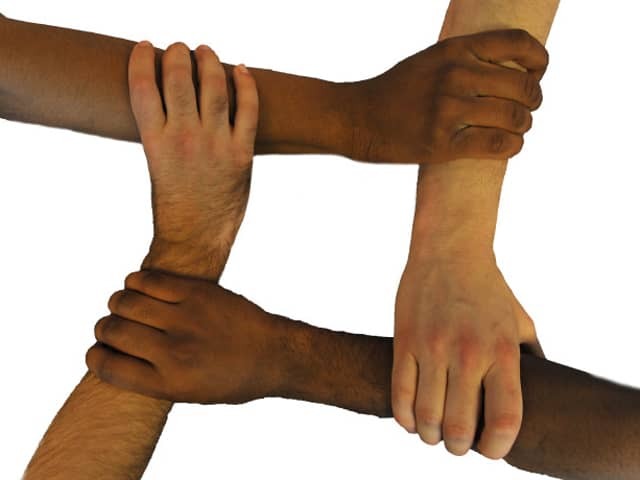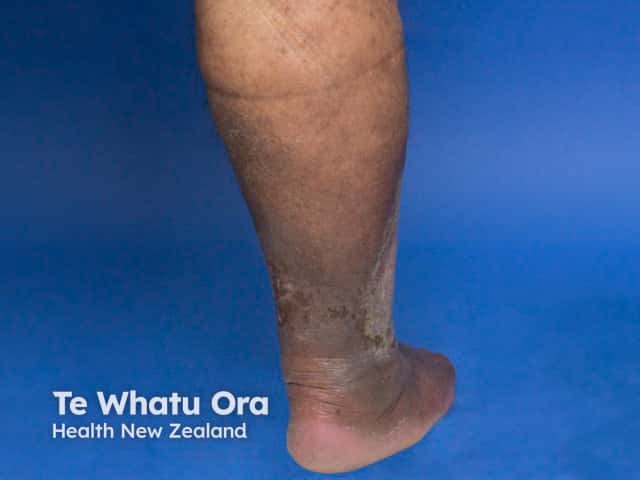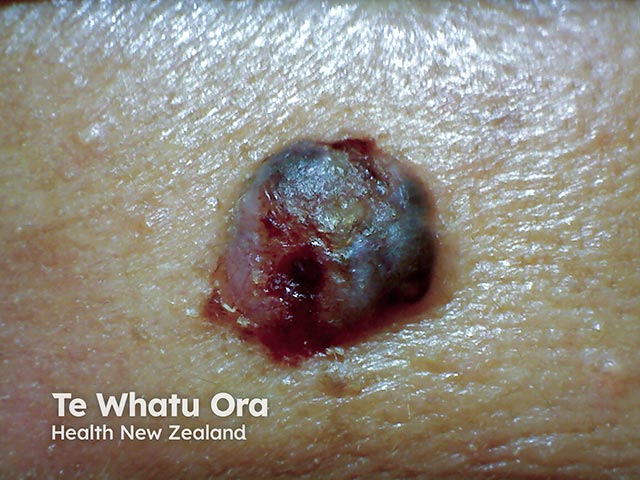Main menu
Common skin conditions

NEWS
Join DermNet PRO
Read more
Quick links
Ethnic dermatology — extra information
Ethnic dermatology
Author: Dr Dushiyanthi Rasanathan, House Surgeon, General Medicine, North Shore Hospital, Auckland, New Zealand. DermNet Editor in Chief: Adjunct A/Prof Amanda Oakley, Dermatologist, Hamilton, New Zealand. Copy edited by Gus Mitchell/Maria McGivern. June 2019.
What is ethnic dermatology?
Ethnic dermatology is an area of interest dedicated to the presentation, diagnosis, and management of skin disorders in patients who have pigmented skin. It is also referred to as dermatology in skin of colour [1].
Ethnicity is defined as “the ethnic group or groups a person identifies with or has a sense of belonging to. It is a measure of cultural affiliation, in contrast to race, ancestry, nationality, or citizenship” [2]. Ethnicity is self-identified, and an individual may belong to more than one ethnic group. Ethnic dermatology highlights the importance of genetics, biology, and cultural practices on skin conditions.

Ethnic diversity
Why is ethnic dermatology important?
The manifestation of skin diseases can vary between ethnic groups and skin colours.
Clinical dermatology emerged as an independent discipline in Europe during the 19th and 20th centuries [3]. This was a time in which anthropologists and philosophers categorised human racial groups within a hierarchy, being influenced by social ideas of the period [4].
Classical descriptions of skin conditions were based on patients with lighter skin [1]. Traditional dermatology does not encompass the social and cultural issues of people with darker skin, which may influence dermatological presentation and the patient’s perspective towards disease, healthcare, and treatment [5].
What are the limitations of ethnic dermatology?
Ethnic dermatology is a non-specific term for a heterogeneous group with darker or non-Caucasian skin [3].
- Skin colour is a continuous variable [4]. At what point does it become ‘ethnic’ or ‘pigmented’?
- Using the term ‘ethnic’ can be controversial [6]. Should patients with skin disorders be classified in the ethnic groups that they self-identify with, or should they be classified by race, skin colour, or Fitzpatrick skin phototype? How should people who identify with more than one group be classified [6]?
- Members of an ethnic majority will tend to experience better health, including a lower prevalence and severity of skin conditions, than ethnic minorities [7].
- The effects of socioeconomic status must be considered. Access to adequate nutrition, dermatological care, and cost of treatment contribute to inequity [8].
How might skin colour influence skin presentations?
Melanin is the key determinant of skin colour. Eumelanin (the normal melanin) and phaeomelanin (a red pigment) are synthesised by melanocytes in the basal layer of the epidermis. The colour of the skin is dependent upon the variation in the amount and type of melanin [4].
- In darker skin, the size, shape, and production rate of melanocytes is greater than in lighter skin and the melanin is contained in larger melanosomes [4,5]. The enzyme tyrosinase, which catalyses the production of melanin, is more active in darker skin [1].
- Skin colour also affects skin ageing. The melanosomes associated with darker skin tend to be degraded more slowly than in fair skin [4].
- Darker skin provides greater protection from UV exposure than fairer skin, because of a greater amount of melanin in skin keratinocytes [4].
Examples of the variation of dermatological presentation with skin colour
Eczema presents as itchy, dry skin, with erythema visible in fair skin due to dilatation of the capillaries.
In more pigmented skin, erythema is inapparent and is replaced by patches of darkened skin colour. Inflammation results in the release of inflammatory mediators that increase melanogenesis by the melanocytes, resulting in post-inflammatory hyperpigmentation [3,9].
Skin cancers in skin of colour, including melanoma, often present at an advanced stage or atypically with a poorer prognosis than skin cancer in lighter skin populations [8,10].

Venous eczema

Psoriasis

Basal cell carcinoma
Perceptions of skin colour
Cultural definitions of beauty vary from culture to culture and are associated with deeply entrenched beliefs within ethnic populations.
- The perception that lighter skin is more socially desirable is notable amongst Asian and African cultures.
- Fair skin may be viewed as a marker of greater socioeconomic status in several cultures [4].
Ethnic groups with these beliefs often come from a background of colonisation by Europeans, who historically held positions of greater status and wellbeing compared to the indigenous populations. The legacy continues with advertising continuing to promote lighter skin as a standard of wealth, power, modernity, and wellbeing [4]. Conversely, those with lighter skin may be seeking a tan or to disguise their skin colour with make-up.
Skin lightening products
Skin lightening or bleaching creams involve the cosmetic use of a range of agents widely available in the Middle East, Asia, South America, and elsewhere that are sold in ethnic stores and supermarkets — despite legal restrictions in many jurisdictions due to their serious potential side effects [11].
- Mercury and caustic agents were formerly key components of skin lightening agents but are becoming less common [4].
- Available skin lightening products may include hydroquinone-based compounds and corticosteroids, most commonly clobetasol propionate (an ultrapotent topical steroid).
- Paradoxically, periorbital hyperpigmentation is the most common side-effect of applying hydroquinone on the skin [11].
- The application of high-dose steroids to the skin increases the risk of skin infections, including cellulitis, scabies, and impetigo (superficial bacterial pyoderma) [4].
- The long-term use of steroids can result in steroid-induced acne, skin atrophy, negative feedback on endogenous cortisol secretion, hypercortisolism, and adrenal insufficiency, among other adverse events [11].
References
- Ogunyemi B, Miller-Monthrope Y. The state of ethnic dermatology in Canada. J Cutan Med Surg 2017; 21: 464–6. DOI: 10.1177/1203475417711110. PubMed
- Statistics New Zealand. Census QuickStats about culture and identity. 2013 Census. Wellington: Statistics New Zealand, 2014: 10–19. Available at: https://www.stats.govt.nz/reports/2013-census-quickstats-about-culture-and-identity (accessed May 2019).
- Myers J. Challenges of identifying eczema in darkly pigmented skin. Nurs Child Young People 2015; 27: 24–8. DOI: 10.7748/ncyp.27.6.24.e571. PubMed
- Dadzie OE, Petit A, Alexis Af (eds). Ethnic dermatology: principles and practice. Hoboken, New Jersey: John Wiley & Sons, 2013.
- Vashi NA, Maibach HI, (eds). Dermatoanthropology of ethnic skin and hair. New York: Springer, 2017.
- Adamson AS. Should we refer to skin as “ethnic?”. J Am Acad Dermatol 2017; 76: 1224–5. DOI: 10.1016/j.jaad.2017.01.028. PubMed
- Jackson C, Maibach H. Ethnic and socioeconomic disparities in dermatology. J Dermatolog Treat 2016; 27: 290–1. DOI: 10.3109/09546634.2015.1101409. PubMed
- Kailas A, Solomon JA, Mostow EN, Rigel DS, Kittles R, Taylor SC. Gaps in the understanding and treatment of skin cancer in people of color. J Am Acad Dermatol 2016; 74: 1020–1. DOI: 10.1016/j.jadd.2015.11.028. PubMed
- Torres V, Herane MI, Costa A, Martin JP, Troielli P. Refining the ideas of "ethnic" skin. An Bras Dermatol 2017; 92: 221–5. DOI: 10.1590/abd1806-4841.20174846. PubMed
- Sneyd MJ, Cox B. Clinical and histologic factors associated with melanoma thickness in New Zealand Europeans, Maori, and Pacific peoples. Cancer 2011; 117: 2489–98. DOI: 10.1002/cncr.25795. PubMed
- Mahé A. The practice of skin‐bleaching for a cosmetic purpose in immigrant communities. J Travel Med 2014; 21: 282–7. DOI: 10.1111/jtm.12106. PubMed
On DermNet
- Dermatological conditions in skin of colour
- Basal cell carcinoma in skin of colour
- Cutaneous squamous cell carcinoma in skin of colour
- Melanoma in skin of colour
- Laser therapy in skin of colour
- Postinflammatory pigmentation
- Hair and skin colour
Other websites
